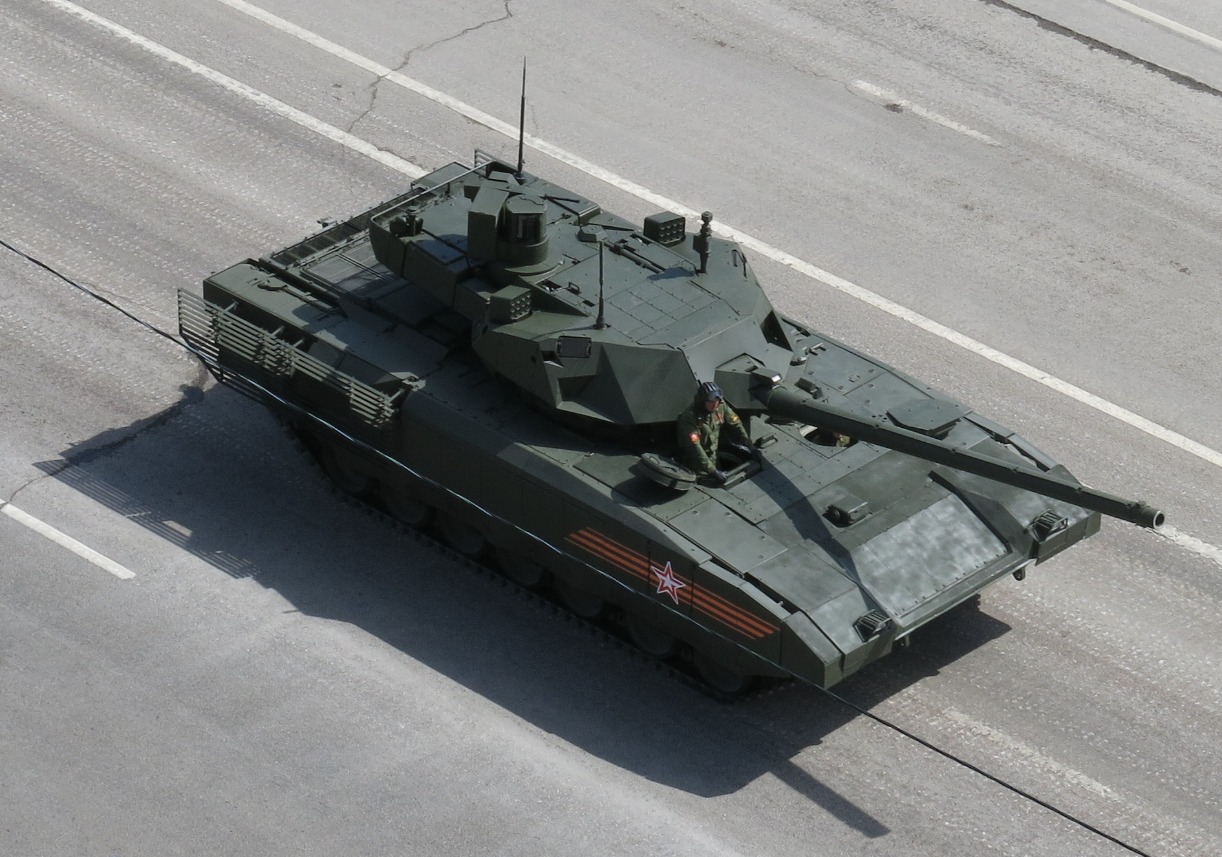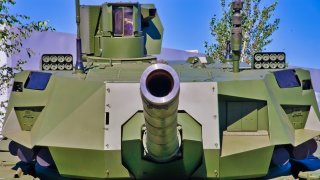Russia's T-14 Armata Tank Nightmare Is Just Getting Started
Despite losing tanks at a rapid rate in Ukraine, Russia is hesitant to deploy its advanced T-14 Armata tanks, considering them "too valuable" to risk in combat, according to Sergey Chemezov, CEO of Rostec.
Summary: Despite losing tanks at a rapid rate in Ukraine, Russia is hesitant to deploy its advanced T-14 Armata tanks, considering them "too valuable" to risk in combat, according to Sergey Chemezov, CEO of Rostec. Briefly used last July, the T-14s were quickly withdrawn. Priced at around $7 million each, these tanks feature revolutionary technology including a new steel composition, composite armor, and powerful armaments, making them a significant step forward in tank design. Yet, Russia's reluctance to use them even in a protracted conflict raises questions about their practical utility or potential vulnerabilities.
T-14 Tank Drama
Russia is not expected to use its advanced T-14 Armata tank in Ukraine—despite hemorrhaging deployed tanks at an unsustainable rate. The reason? The T-14 is “too valuable,” one source with access to Russian president Vladimir Putin said.
The source is Sergey Chemezov, the CEO of Russian state-owned defense corporation Rostec, who spoke with state-run news agency RIA Novosti.
Briefly, the Russians deployed the T-14, last July, but the tanks were withdrawn.
“The Armata, in general, is a little expensive,” Chemezov said. “In terms of functionality, it is, of course, much superior to existing tanks, but it is too valuable, so the army is unlikely to use it now. It’s easier for them to buy the same T-90s.”
T-14 Armata Tank: Too Valuable?
Basically, the Russian army is the guy who buys a Ferrari and then refuses to drive it for fear of wrecking the thing. Yet, in theory, the T-14 tank is a tool that could help the Russians meet their objectives—to not deploy that tool seems to reduce the chances of meeting the objective. To purchase something, like a T-14 tank, which has such a singular application, and then not use the tank when the singular application arises, seems odd. If the Russia-Ukraine war does not merit the deployment of Russia’s most valuable tank, then what would exactly? What are the Russians saving the T-14 for, if not for a ground war of attrition that has extended into its third year?
Or does Russia have insider information suggesting that their new tank is a lemon, incapable of performing?
Perhaps the Russians know the T-14 wouldn’t make a dent and would be risked unnecessarily, without the prospect of benefit. In that case, preserving the T-14 fleet to fight another day may make the most sense. Or perhaps the Russians are unwilling to risk the public relations hit that would come from the destruction of their T-14 fleet at the hands of the simple yet stubborn Ukrainian resistance.
A revolutionary weapon?
One might expect the Russians to be eager to deploy their T-14, given the advanced nature of the platform. In 2016, a British Army briefing assessed that “without hyperbole, Armata represents the most revolutionary step change in tank design in the last half century.” Western armies considered the T-14 a major concern.
The T-14 main battle tank, costing upwards of $7 million per unit, features a 2A82-1M 125mm smoothbore cannon with an autoloader, a 12.7mm Kord machine gun, and a PKTM machine gun. The tank’s 12N360 Diesel Double turbocharger, and 12-speed automatic gearbox, can provide 1,500 horsepower—good enough to carry the T-14 at speeds of 50 miles per hour.

The T-14 features a new steel, codenamed 44S-SV-SH, which is highly durable and capable of withstanding extreme temperatures. The new steel is also 15 percent lighter than the steel used in previous tanks. In addition to the new steel, the T-14 relies on a composite armor with an unknown ceramic layer that uses Explosive Reactive Armor (ERA) as a base design.
Yet, the T-14’s innovative and impressive features won’t do the Russians much good from the sidelines.
About the Author: Harrison Kass
Harrison Kass is a defense and national security writer with over 1,000 total pieces on issues involving global affairs. An attorney, pilot, guitarist, and minor pro hockey player, Harrison joined the US Air Force as a Pilot Trainee but was medically discharged. Harrison holds a BA from Lake Forest College, a JD from the University of Oregon, and an MA from New York University. Harrison listens to Dokken.
Image Credit: Shutterstock.


